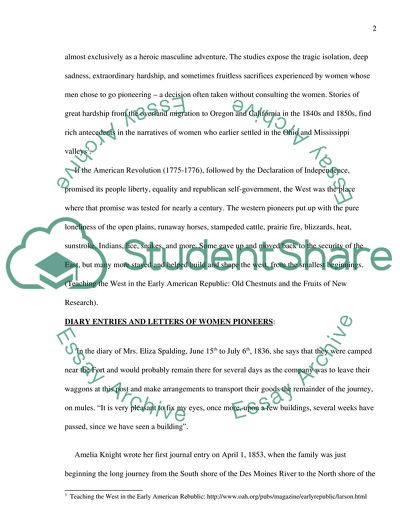Cite this document
(Women Pioneers on the Western Trails Report Example | Topics and Well Written Essays - 3750 words, n.d.)
Women Pioneers on the Western Trails Report Example | Topics and Well Written Essays - 3750 words. https://studentshare.org/history/1704896-women-pioneers-on-the-western-trails
Women Pioneers on the Western Trails Report Example | Topics and Well Written Essays - 3750 words. https://studentshare.org/history/1704896-women-pioneers-on-the-western-trails
(Women Pioneers on the Western Trails Report Example | Topics and Well Written Essays - 3750 Words)
Women Pioneers on the Western Trails Report Example | Topics and Well Written Essays - 3750 Words. https://studentshare.org/history/1704896-women-pioneers-on-the-western-trails.
Women Pioneers on the Western Trails Report Example | Topics and Well Written Essays - 3750 Words. https://studentshare.org/history/1704896-women-pioneers-on-the-western-trails.
“Women Pioneers on the Western Trails Report Example | Topics and Well Written Essays - 3750 Words”. https://studentshare.org/history/1704896-women-pioneers-on-the-western-trails.


